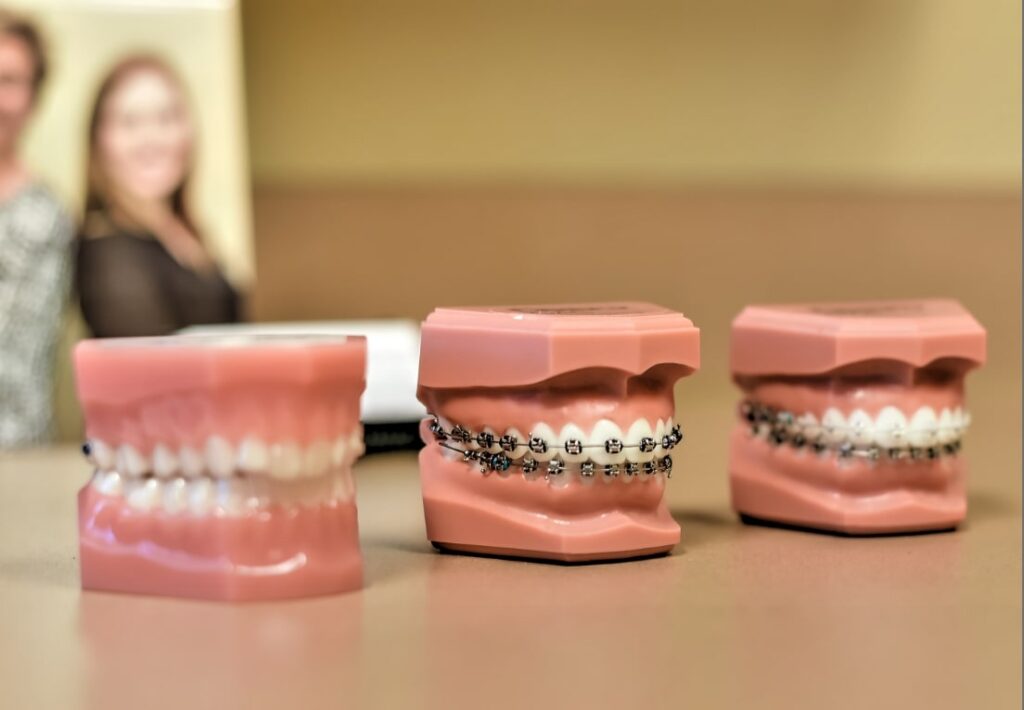Specialist Cumming Braces and Aligners: What to Know Prior To You Go to
Specialist Cumming Braces and Aligners: What to Know Prior To You Go to
Blog Article
Comprehensive Guide to Orthodontics Procedures for Correcting Oral Misalignments
In the world of orthodontics, the journey to accomplishing a perfectly lined up smile involves a myriad of procedures customized to fix oral misalignments. From standard braces to undetectable aligners and also surgical choices, the area of orthodontics provides a variety of options to address differing degrees of dental abnormalities. Comprehending the intricacies of each treatment, including their mechanisms, advantages, and potential disadvantages, is essential in making informed decisions regarding one's orthodontic therapy. As we browse via the detailed overview to orthodontic treatments for fixing oral imbalances, the complex information of each technique will certainly unfold, shedding light on the course toward a practical and unified dental placement.
Orthodontic Procedures Review

Along with clear aligners and standard dental braces, orthodontists might additionally suggest other interventions like headgear, palatal expanders, or retainers to attend to certain positioning concerns (cumming orthodontics). These procedures are tailored to every patient's one-of-a-kind needs and may include a mix of therapies to achieve the wanted results. Regular adjustments and surveillance are important parts of orthodontic therapy to ensure development is on track and to make any essential modifications in the process. By undertaking orthodontic treatments, individuals can not only achieve a straighter grin however additionally enhance their general dental health and wellness and function.
Traditional Dental Braces: How They Work
When thinking about orthodontic treatments for oral misalignments, traditional dental braces stand out as a tried and true method for remedying teeth placing. Conventional braces are composed of braces, wires, and bands that function with each other to use continual pressure on the teeth, progressively relocating them into the preferred alignment.
One secret facet of exactly how typical braces job is the process of bone remodeling. As stress is related to the teeth with the dental braces, the bone surrounding the teeth is improved to sustain the new tooth placements. This renovation is essential for the long-lasting security of the fixed placement. Individuals will certainly need regular changes at the orthodontist's office to make sure the dental braces continue to apply the proper pressure for effective teeth motion.
Invisible Aligners: Benefits And Drawbacks
Undetectable aligners offer a very discreet and convenient option to typical dental braces for fixing oral misalignments. These clear, personalized trays are practically undetectable when worn, making them an attractive choice for people looking for a more visually pleasing orthodontic therapy. One of the main advantages of undetectable aligners is their removability, enabling for much easier upkeep of oral hygiene compared to conventional braces. Patients can remove the aligners before consuming or cleaning their teeth, minimizing the danger of food getting stuck in the appliance and streamlining the cleansing procedure.

Surgical Orthodontic Options
Surgical interventions in orthodontics present feasible options for dealing with intricate oral misalignments that may not be successfully resolved through traditional orthodontic therapies. While unseen aligners and traditional braces can remedy several orthodontic concerns, certain cases require surgical intervention to accomplish ideal outcomes. Surgical orthodontic options are usually advised for extreme malocclusions, significant jaw discrepancies, and cases where the underlying bone structure needs modification to achieve proper positioning.
One typical surgical orthodontic procedure is orthognathic surgical treatment, which involves repositioning the jaws to fix useful problems such as problem talking or eating. This surgical treatment is typically done in partnership with an orthodontist who helps align the teeth before and after the procedure. Surgical orthodontics might additionally entail procedures to subject affected teeth, remove excess periodontal cells, or improve the jawbone to develop a more unified facial account.
Prior to taking into consideration surgical orthodontic options, patients undertake an extensive assessment to identify the requirement and potential advantages of such interventions. orthodontist. While surgery may seem daunting, it can dramatically boost both the feature and aesthetic appeals of the smile in cases where standard orthodontic treatments fail
Retainers and Post-Treatment Care

Failure to conform with post-treatment treatment find me a dentist near me guidelines can result in regression, where the teeth progressively move back towards their original settings. find more info Regular retainer wear, excellent oral hygiene, and routine oral exams are important for preserving the outcomes achieved with orthodontic surgical procedure and guaranteeing the long-lasting security of the remedied oral placement.
Conclusion
To conclude, orthodontic treatments supply various alternatives for correcting dental misalignments. Conventional braces use metal brackets and wires to shift teeth into appropriate positioning. Undetectable aligners give an even more very discreet choice yet might not be suitable for all cases. Surgical orthodontic options are available for more severe misalignments. Retainers are typically utilized post-treatment to preserve the brand-new positioning. Overall, orthodontic treatments can efficiently enhance dental health and aesthetic look.
As we browse with the thorough guide to orthodontic procedures for dealing with dental imbalances, the elaborate details of each approach will certainly unravel, shedding light on the course towards a harmonious and useful dental placement. - cumming invisalign
One of the most common orthodontic treatments is the usage of dental braces, which consist of steel brackets and cables that use gentle pressure to slowly move teeth right into the desired setting.When taking into consideration orthodontic treatments for oral misalignments, typical braces stand out as a reliable technique for remedying teeth placing. Furthermore, undetectable aligners might not be suitable for complicated orthodontic problems that require learn this here now even more significant teeth movement, as they are usually recommended for mild to modest situations. Retainers are tailor-made orthodontic devices made to hold teeth in their corrected placements after the conclusion of orthodontic therapy.
Report this page